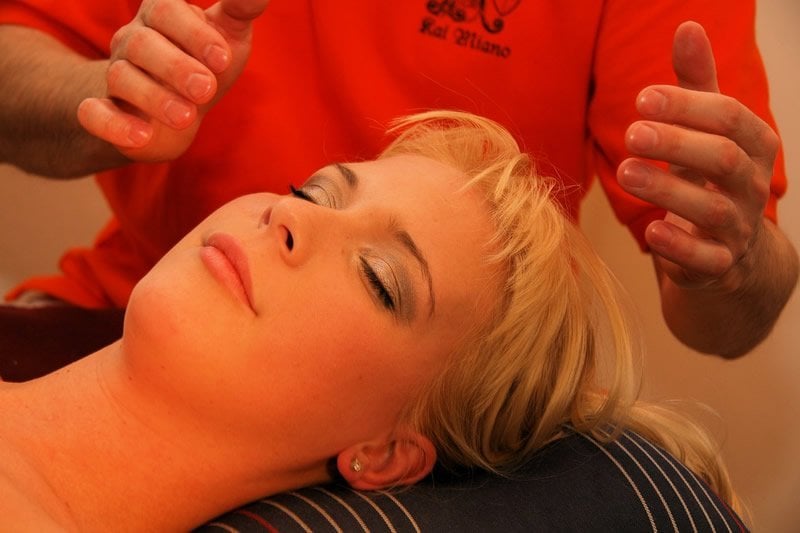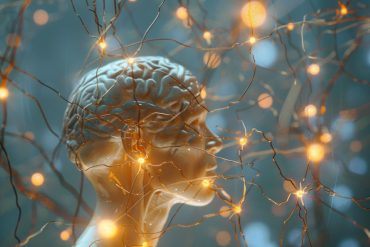Summary: Migraine influences sensory function, specifically when it comes to tactile perception.
Source: International Headache Society
A recent study published in the journal Cephalalgia, the official journal of the International Headache Society, builds on the sensorial characteristics of migraine patients. The study, entitled “C-tactile touch perception in migraineurs – a case-control study”, was led by Dr. Gudrun Gossrau, from the University Hospital and Faculty of Medicine Carl Gustav Carus, Dresden, Germany.
Migraine is a neurological disorder that affects every sense. Leaving the headache aside, many other symptoms that make up the disease are the result of sensory abnormalities. Hypersensitivity to light (photophobia), sounds (phonophobia) and smells (osmophobia), nausea, vomiting, aura, allodynia (that pain in the scalp when combing or making hair ponytails), and other less common ones. These sensory disturbances make it evident that migraine is much more than a headache and that it affects people’s functionality in a wider and substantial manner.
In Dr. Gossrau’s study, to get an idea of how migraine influences sensory functioning, the researchers investigated the response to the tactile stimulus (light touch on the skin) of people with migraine. In addition to the discriminatory aspect of the tactile stimulus (location, the pressure of the stimulus), the researchers evaluated affective aspects of touch, that is, the sensation of pleasure associated with touch. The researchers applied different speeds of touch with a brush on the forearm and cheek (region innervated by the trigeminal nerve) and measured the associated pleasure, discomfort or pain responses. The effect of repeated stimuli in a row was also measured (30 stimuli repeated in 60 minutes of testing).
Fifty-two people without migraine (controls) and 52 patients were tested. Patients reported higher scores for pain in both applied areas (forearm and cheek) and less sensation of pleasure in the test of repeated stimuli. Interestingly, patients using triptan to abort their attacks showed normal scores. According to the authors, the same neurophysiological processes related to allodynia could explain these results.
This disturbance of sensory function seems to be specific to migraine. In another study, conducted by two research groups in the USA and Israel, the sensory profile assessed through pressure and temperature stimuli were compared between healthy people and patients with persistent post-traumatic headache (a type of secondary headache, caused by trauma in the head). The researchers subdivided patients into 2 main groups based on the characteristics of the pain, a group of patients with migraine-like headaches and another with tension-type headache-like pain.
The post-traumatic headache group with a migraine-like characteristic did not show substantial differences in the sensory profile in relation to the healthy group. Together with the former study, these data indicate that different types of headache have different origins and causes and modify the sensory function differently, as highlighted by the authors.

As migraine is a primary headache, that is, it is the disease and not the consequence of other diseases (such as traumatic post-traumatic headache), these studies emphasize the particularity of migraine as a neurological disease that causes many other disabilities other than pain.
As highlighted by Dr. Peter Goadsby, from the King’s College London, United Kingdom, one of the most prolific headache researchers in the world and Chair of the Classification Committee of the International Headache Society, migraine is “an inherited tendency of the brain to lose control of its inputs”.
Source:
International Headache Society
Media Contacts:
Arão Belitardo de Oliveira – International Headache Society
Image Source:
The image is in the public domain.
Original Research: Closed access
“C-tactile touch perception in migraineurs – a case-control study”. Gudrun Gossrau et al.
Cephalalgia doi:10.1177/0333102419889349.
Abstract
C-tactile touch perception in migraineurs – a case-control study
Background
Migraine is characterized by sensory hypersensitivity and habituation deficits. Slow brushing over the skin activates C-tactile nerve fibers, which mediate pleasant touch and analgesic effects in healthy subjects. As this function is altered in painful conditions, we aimed to examine whether the C-tactile processing is disrupted in migraines.
Methods
To psychophysically assess C-tactile function, we applied optimal and suboptimal C-tactile stroking stimuli on the dorsal forearm (body reference area) and the trigeminally innervated skin of 52 interictal migraineurs and 52 matched healthy controls. For habituation testing, 60 repeated C-tactile optimal stimuli were presented in both test areas. The participants rated each stimulus on a visual analogue scale by intensity, pleasantness, and painfulness.
Results
Regarding C-tactile function, migraineurs showed unphysiological rating patterns but no significantly different pleasantness ratings than controls. During repeated stimulation, controls showed stable pleasantness ratings while migraineurs’ ratings decreased, especially in those experiencing tactile allodynia during headaches. Migraineurs taking triptans responded like controls.
Conclusion
The C-tactile function of migraineurs is subclinically altered. Repeated C-tactile stimulation leads to altered habituation but differs from previous work by the direction of the changes. Although the pathophysiology remains unknown, causative mechanisms could include central and peripheral neuronal sensitization, tactile allodynia and hedonic stimulus attributions.






